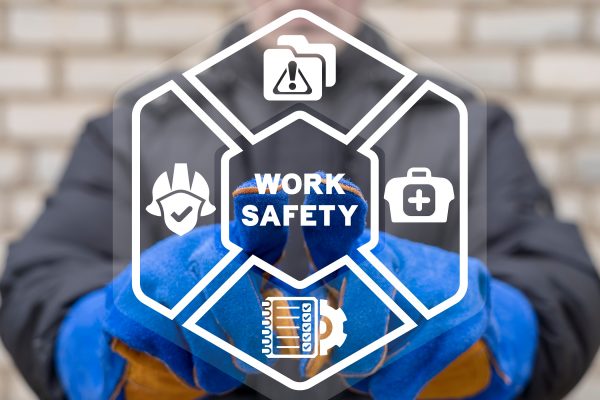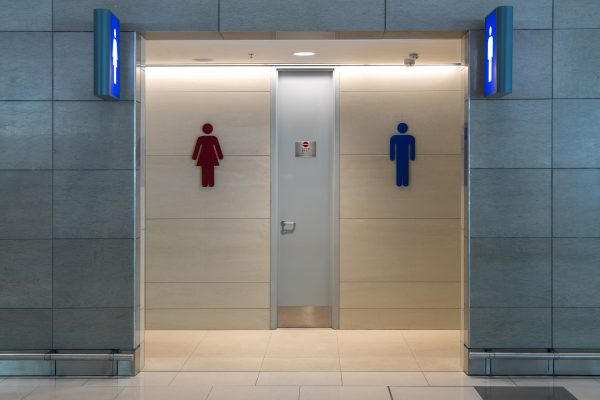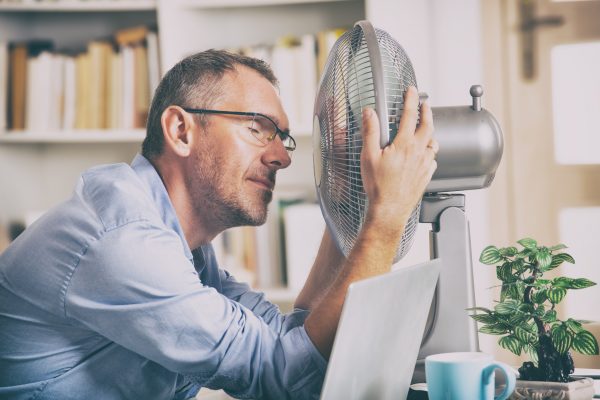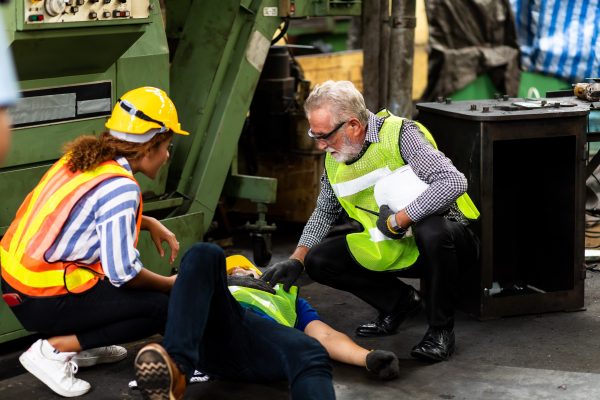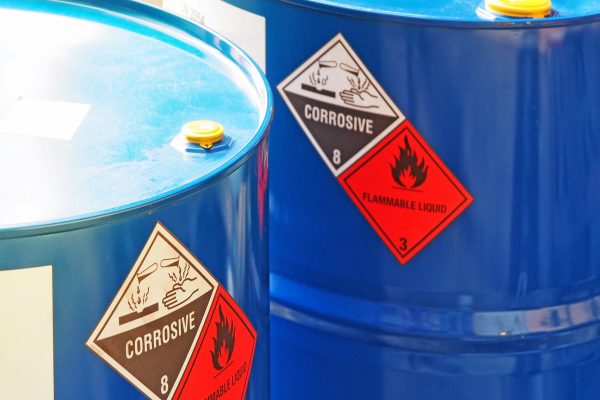The most commonly used indicator of thermal comfort is air temperature – it is easy to use and most people can relate to it.
However, air temperature alone is not a valid or accurate indicator of thermal comfort or thermal stress. It should always be considered in relation to other environmental and personal factors.
The six factors affecting thermal comfort are both environmental and personal. These factors may be independent of each other, but together contribute to an employee’s thermal comfort.
Environmental Factors
Air temperature: This is the temperature of the air surrounding the body. It is usually given in degrees Celsius (°C).
Radiant temperature: Thermal radiation is the heat that radiates from a warm object. Radiant heat may be present if there are heat sources in an environment.
Radiant temperature has a greater influence than air temperature on how we lose or gain heat to the environment.
Examples of radiant heat sources include: the sun; fire; electric fires; ovens; kiln walls; cookers; dryers; hot surfaces and machinery, molten metals etc.
Air velocity: This describes the speed of air moving across the employee and may help cool them if the air is cooler than the environment. Air velocity is an important factor in thermal comfort for example:
• Still or stagnant air in indoor environments that are artificially heated may cause people to feel stuffy. It may also lead to a build-up in odour.
• Moving air in warm or humid conditions can increase heat loss through convection without any change in air temperature.
• Physical activity also increases air movement, so air velocity may be corrected to account for a person’s level of physical activity.
• Small air movements in cool or cold environments may be perceived as a draught as people are particularly sensitive to these movements.
Humidity
If water is heated and it evaporates to the surrounding environment, the resulting amount of water in the air will provide humidity.
Relative humidity is the ratio between the actual amount of water vapour in the air and the maximum amount of water vapour that the air can hold at that air temperature.
Relative humidity between 40% and 70% does not have a major impact on thermal comfort. In workplaces which are not air conditioned, or where the weather conditions outdoors may influence the indoor thermal environment, relative humidity may be higher than 70%. Humidity in indoor environments can vary greatly and may be dependent on whether there are drying processes (paper mills, laundry etc) where steam is given off.
High humidity environments have a lot of vapour in the air, which prevents the evaporation of sweat from the skin. In hot environments, humidity is important because less sweat evaporates when humidity is high (80%+). The evaporation of sweat is the main method of heat reduction.
When non-breathable vapour-impermeable personal protective equipment (PPE) is worn, the humidity inside the garment increases as the wearer sweats because the sweat cannot evaporate. If an employee is wearing this type of PPE (e.g. asbestos or chemical protection suits etc) the humidity within the PPE will be high.
Personal Factors
Clothing insulation: Thermal comfort is very much dependent on the insulating effect of clothing on the wearer.
Wearing too much clothing or PPE may be a primary cause of heat stress even if the environment is not considered warm or hot.
If clothing does not provide enough insulation, the wearer may be at risk from cold injuries such as frostbite or hypothermia in cold conditions.
Clothing is both a potential cause of thermal discomfort as well as a control for it as we adapt to the climate in which we work. You may add layers of clothing if you feel cold or remove layers of clothing if you feel warm. Many companies inhibit this ability for employees to make reasonable adaptations to their clothing as they require them to wear a specific uniform or PPE.
It is important to identify how the clothing contributes to thermal comfort or discomfort. By periodically evaluating the level of protection provided by existing PPE and evaluating newer types of PPE you may be able to improve the level of thermal comfort.
Work Rate and Metabolic heat
The more physical work we do, the more heat we produce. The more heat we produce, the more heat needs to be lost so we don’t overheat. The impact of metabolic rate on thermal comfort is critical.
A person’s physical characteristics should always be borne in mind when considering their thermal comfort, as factors such as their size and weight, age, fitness level and sex can all have an impact on how they feel, even if other factors such as air temperature, humidity and air velocity are all constant.
Measuring Thermal Comfort
A simple way of estimating the level of thermal comfort in your workplace is to ask your employees or their safety representatives (such as unions or employee associations) if they are satisfied with the thermal environment i.e. to use the thermal comfort checklist available from the website of the HSE; it can help employers and their managers to identify whether there may be a risk of thermal discomfort to employees. It should be noted that this is a basic checklist and does not replace a suitable and sufficient risk assessment, taking account of thermal comfort.
Assessing Thermal Comfort
Once you have identified a problem using the thermal comfort checklist, in most instances the guidance published by the HSE will be sufficient to enable you to improve thermal comfort in your workplace. If you need to take further action in measuring thermal comfort, you should refer to the relevant British Standards on thermal comfort.
Read the six basic factors (as set out below) that affect thermal comfort and think about how they may be affecting your employees and about resolving the those having the largest impact on the most persons. If the environment is affected by seasonal factors you may need to reassess your risk at different seasons of the year.
Controlling Thermal Comfort
There are a number of ways that you can control thermal comfort in the workplace, some of which are very simple.
Control measures:
There are six main control methods you can use:
1. Control the environment:
• replace hot air with cold, or replace cold air with hot, as required;
• humidify or dehumidify the air as required;
• increase air movement by ventilation or air conditioning;
• reduce draught discomfort by directing the ventilation or air movement so that it doesn’t blow directly onto the employees, e.g. using baffles;
2. Separate the source of heat or cold from the employee:
• erect barriers that shield or insulate the work area or restrict access;
• redesign jobs to remove the employee from the area
3. Control the task:
• restrict the length of time that employees are exposed to hot or cold conditions
• control the amount of work and rate of work employees are expected to do
• introduce mechanical aids (eg lifting aids or power tools) to assist physically demanding jobs in warm and hot environments or when employees are wearing a lot of clothing
4. Control the clothing:
• If PPE is worn, make sure that employees are not wearing more PPE than is appropriate (ie a higher protection factor than is needed)
• if uniforms are worn, evaluate alternative designs, new materials etc to improve the thermal comfort of clothing
• evaluate dress code and allow employees to adapt their clothing where possible
• multiple layers of clothing enable employees to make reasonable adjustments to their clothing based on their individual needs.
5. Allow the employee to make behavioural adaptations:
• where possible, remove all restrictions that may prevent employees from making minor adjustments to their clothing or work rate
• provide warm-up or cool-down areas
• provide personal heaters or fans
• allow employees to adjust thermostats or open windows as appropriate
6. Monitor the employee:
• provide appropriate supervision and training
• obtain medical advice from an occupational health professional for employees who are pregnant, have an illness or disability, or are on medication
• your risk assessment should already address risks to pregnant employees, but you may choose to review it when an employee tells you she is pregnant, to help you decide if you need to do any more to control the risks.

Stocking only premium EV charging cables, we ensure you experience a stress-free EV charge, over and over, confidently backed by our 2 year warranty. Our premium & reliable charging cables are compliant with EU & UK safety standards. We offer free next day delivery* on all EV charging cables when shipped within mainland UK.
Administrative Controls
Administrative controls include planning and rescheduling work times and practices and rest schedules, for example, scheduling ‘hot’ work for cooler times of the day or allowing employees to have flexible hours to help avoid the worst effects of working in high temperatures.
Administrative controls are generally of a short-term, temporary nature. Although some can be of a permanent nature, for example, emergency procedures and the provision of appropriate welfare facilities, such as competent first aiders with additional knowledge in the management and recognition of heat-related illnesses and injuries as well as ensuring the availability of appropriate first-aid equipment.
Engineering Controls
These should be the first choice to reduce or eliminate the hazard. Although the initial cost of engineering controls may seem high, it has been found that the implementation cost is often offset by the resulting improvements to production.
Any practical solution to controlling thermal comfort is likely to require a combination of different options developed in consultation with employers, employees and their representatives.
Heating
Many types of heating systems are available:
• Hot air-based heating systems
• Water-based central heating systems using radiators
• Combined heat and ventilation systems using air conditioning systems
• Electrical heating systems using electrical heaters
• Under-floor heating systems using either electrical coils or heated fluids
• Overhead heating systems
Most of these systems are useful. However, the beneficial effects may be restricted in some situations to the immediate locality of the heat source.
Air movement
There are many methods for increasing air movement, i.e. fans of various sizes (but may cause draught or noise problems).
Large diameter ceiling fans can provide air movement that is effective over a wide area. Large exhaust fans, mounted in roofs and walls, are useful for removing heated air and drawing in cooler air from outside.
Air conditioning
This can range from small units that lower the air temperature but do not control humidity levels or air movement, to large units that can cope with extreme conditions as well as humidity and air movement.
When air conditioning systems are used, take care to ensure uniform air distribution throughout the workplace, otherwise some employees may complain of feeling cold while others are feeling hot.
Air conditioning units should be operated as per the manufacturer’s instructions.
Evaporative cooling
Evaporative coolers produce a moderate reduction in air temperature and increase humidity. They operate by passing hot air over water-saturated pads and the water evaporation effect reduces the air temperature.
Thermal insulation
There are many different types of thermal insulation materials, e.g. loose fills, rock wool and insulation boards. The material acts as a barrier, which slows heat flow in the summer and heat loss in the winter, but it is only effective where there is a temperature difference between the inside and the outside of the building or between two areas inside a building.
Appendix A: Outdoor Working
When working outdoors the effects of the weather in the UK environment can potentially have a serious impact on an employee’s health if the risks have not been considered or properly managed. This impact may be immediate, or it may occur over a long time period.
When working outdoors the weather can have influence an individual’s effectiveness and this is not readily managed using just engineering controls. In these circumstances some of the most effective ways of managing these environments are to introduce some simple administrative controls for example:
Cold environments:
• Ensure the personal protective equipment issued is appropriate;
• Provide mobile facilities for warming up, and encourage the drinking of warm fluids such as soup or hot drink;
• Introduce more frequent rest breaks;
• Consider delaying the work – can it be undertaken at warmer times of the year without compromising on safety?
• Educate workers about recognising the early symptoms of cold stress.
Hot environments:
• Reschedule work to cooler times of the day;
• Provide more frequent rest breaks and introduce shading to rest areas;
• Provide free access to cool drinking water;
• Introduce shading in areas where individuals are working;
• Encourage the removal of PPE when resting to help encourage heat loss;
• Educate workers about recognising the early symptoms of heat stress.
Working in the sun:
A sunny day makes most of us feel good, but too much sunlight can be hard on the skin. It is not simply sudden exposure while on holiday that is harmful. Even a tan that has been built up gradually can be harmful to health. A tan is a sign that the skin has been damaged.
The problem is caused by the ultraviolet (UV) rays in sunlight. People whose job keeps them outdoors for a long time, such as farm or building site workers, market gardeners, outdoor activity workers and some public service workers could get more sun on their skin than is healthy for them. Such people can be at greater risk of skin cancer.
Skin cancer is one of the most common forms of cancer in the UK with over 50,000 new cases every year. A tan is a sign that the skin has been damaged. The damage is caused by ultraviolet (UV) rays in sunlight.
What are the dangers of working in the sun?
In the short term… sunburn can blister your skin and make it peel, but even mild reddening is a sign of skin damage.
In the long term… too much sun will speed up the ageing of your skin, making it leathery, mottled and wrinkled, but the most serious effect is an increased chance of developing skin cancer.
Abnormal reactions to sunlight Some medicines, contact with some chemicals used at work (such as dyes, wood preservatives, coal-tar and pitch products), and contact with some plants, can make your skin more sensitive to sunlight. Your works doctor or family doctor should be able to advise you further.
Who is at risk?
If work keeps you outdoors for a long time your skin could be exposed to more sun than is healthy for you. You should take particular care if you have:
• Fair or freckled skin that doesn’t tan, or goes red or burns before it tans;
• Red or fair hair and light-coloured eyes;
• A large number of moles.
Even if your skin is not fair and freckled, you should still be particularly careful while you are working out of doors in the summer in the three or four hours around midday. The sun is most intense at these times. Even on cloudy days, UV can filter through.
Some Dos and Don’ts to avoid the dangers are:
• Do try to avoid the mild reddening which is a sign of skin damage as well as being an early sign of burning.
• Do try to work and take your breaks in the shade if you can – this will reduce your risk of harming your skin and also help to keep you cool.
• Do continue to take care when you go on holiday – your skin remembers every exposure.
• Don’t be complacent; get to know your skin’s most vulnerable areas (e.g. back of neck, head) and keep them covered.
• Don’t try to get a tan – it’s not a healthy sign. It might look good, but it indicates that the skin has already been damaged. A suntan does not eliminate the long-term cancer risk which is associated with prolonged exposure to the sun; nor will it protect against premature ageing.
More information on sun protection is available on Cancer Research UK’s Sunsmart website www.sunsmart.org.uk


